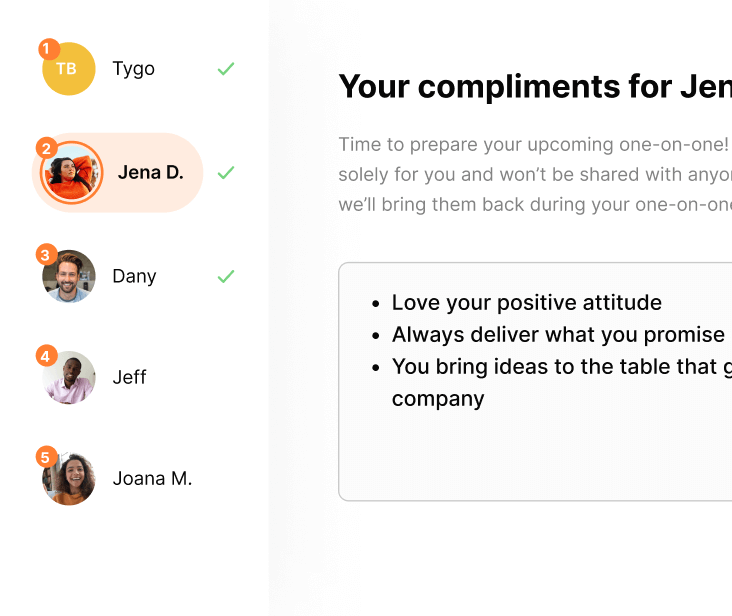Back to Blog
8 challenges in team building (and how to tackle them)
Team work and collaboration are among the most critical factors for a successful organization. We have dedicated a whole article on why team building is important and how it can benefit your company. But what if you struggle in that area?
We compiled a list of the biggest challenges in team building you should be aware of and ways you can tackle them.
Want to learn more? Check out our pieces on team building for any workplace, the best group activities to do online or that are both online and free. Let’s dive in.
What is team building?
The Oxford dictionary defines team building as “the action or process of causing a group of people to work together effectively as a team, especially by means of activities and events designed to increase motivation and promote cooperation”.
This and similar definitions have existed for centuries and have not changed. But the world, especially how we work, has indeed moved on. Most organizations focus their team bonding efforts on one big event or team building activity per year – as they did 20 years ago. Modern leaders understand that employees are happier and more productive when they put effort into building a motivated team more regularly.
Companies that offer their employees to work hybrid or remote are facing additional challenges in team building and keeping their teams connected and motivated. Therefore team building plays an even more important role for distributed teams.
Share fun facts and bond with a team quiz
Have your participants choose from a list of questions they’d like their coworkers to answer about them, before watching as they guess the right answer.
01. Yes
share-fun-facts-and-bond-with-a-team-quiz

Run a guided recognition activity
Have your participants choose from a list of questions they’d like their coworkers to answer about them, before watching as they guess the right answer.
01. Yes
run-a-guided-recognition-activity

Organize a virtual cooking class
Hire a professional chef to help your team cook a delicious lunch or dinner. May be difficult for co-workers with families. To find providers and get tips, read our blog about virtual cooking classes.
02. No
organize-a-virtual-cooking-class

Hire a stand-up comedian
Have your participants choose from a list of questions they’d like their coworkers to answer about them, before watching as they guess the right answer.
02. No
hire-a-stand-up-comedian

No items found
No items found
Table of contents
Team work and collaboration are among the most critical factors for a successful organization. We have dedicated a whole article on why team building is important and how it can benefit your company. But what if you struggle in that area?
We compiled a list of the biggest challenges in team building you should be aware of and ways you can tackle them.
Want to learn more? Check out our pieces on team building for any workplace, the best group activities to do online or that are both online and free. Let’s dive in.
What is team building?
The Oxford dictionary defines team building as “the action or process of causing a group of people to work together effectively as a team, especially by means of activities and events designed to increase motivation and promote cooperation”.
This and similar definitions have existed for centuries and have not changed. But the world, especially how we work, has indeed moved on. Most organizations focus their team bonding efforts on one big event or team building activity per year – as they did 20 years ago. Modern leaders understand that employees are happier and more productive when they put effort into building a motivated team more regularly.
Companies that offer their employees to work hybrid or remote are facing additional challenges in team building and keeping their teams connected and motivated. Therefore team building plays an even more important role for distributed teams.
What are the biggest challenges in team building?
Building a strong team with motivated individuals who harmonize well with each other is no easy task. Here is a list of challenges that many organizations are facing in their teams:
- Lack of trust between team members
- Confusion and uncertainty about the roles and responsibilities
- Over-dependence on the team lead
- Feelings of loneliness and exclusion
- Lack of employee engagement
- Withholding information from others
- Working towards opposing goals
- Missing empathy and less transactional
Do some of them sound familiar to you? Have you felt or behaved in the same way in the past? Many of these challenges are universal, but they also change depending on your team size, maturity, and hierarchy level.
Even small conflicts and challenges within a team should not be neglected. Ignoring team challenges is not an option. Why? Many significant problems, especially interpersonal, initiate as a minor conflict. It will only get harder to get things straight again the longer you wait.
How to overcome team building challenges?
Solving team challenges is not a matter of a day or a week. Many problems are rooted more deeply. It needs time and dedication to move these obstacles out of the way to become a high-performing team.
Here are three recommendations to build strong and effective teams:
- Culture: Clearly define the values you want to have in your team or organization. Make sure you communicate them clearly and regularly. And most importantly, be a role model and show these values in your actions.
- Employee selection: When building a new team or adding new team members, establish a process that helps you to find the right people who fit into your team and culture. It only takes one person to create a toxic environment in a team and create disbalance, which can lead to the aforementioned issues.
- Team building: Well-designed team building activities are much more than simply having a bit of fun together. The best activities solve at least one of the challenges the team is facing and have a take-away that can be transferred to the day-to-day job. Good leaders regularly evaluate the “pulse” of their team. Are colleagues overworked, feel resentment, or are individuals excluded from the team? Based on such insights, leadership should act and initiate team building measures.
To solve team building challenges, you can think beyond the well-known team building activities. Effective activities can be completed within 15 minutes and still have a highly positive impact on your team morale. Have you tried lunch roulettes, appreciation showers, or regular retrospective sessions yet? Read this article to learn more about the top 18 team building activities.
Why is team building important?
Short answer: Read our article that answers this question in detail. Long answer: The goal of team building for many organizations is to i) retain their talents and ii) increase work efficiency.
Sounds like a high-level outcome of a project done by external strategy consultants where no one understands what to do with the results? Right, let’s break it further down to make it more tangible.
Investments in team building lead to:
- More trust
- Better communication
- Higher productivity
- Closer connections
- Increase in creativity
- Less competition
- Resolution of conflicts
- Learning new skills
- Understanding skills and behaviors of teammates
- Stronger company culture
When reading these benefits, it becomes obvious that team building should not be an annual “task” on the to-do list. Instead, it needs to be on top of the agenda of a company as well as team leaders. It is about making effective team building a habit.
To attract and retain the best talent, employee wellbeing is a core pillar for all established successful companies as well as innovative tech startups. Modern leaders use tools and technology to measure team happiness on a regular basis and understand what the next best actions are.
Which impact has effective team building on the performance?
In addition to the more qualitative benefits of team building, such as the increase in employee engagement, many studies and surveys have proven a measurable quantitative impact on the performance of a team.
More engaged employees have a positive impact on the organization's profit
Companies with highly engaged employees achieve double the net income for their companies compared to organizations where employees are less engaged. This is a key finding of a study by the Kenexa Research Institute.
The Institute’s researcher added that 50% of the positive changes in communication patterns within the teams can be credited to social interaction outside of the workplace.
Another study conducted by MIT confirms that the key to creating high-performant teams is not to influence what they discuss but in the manner in which they communicate. “We now know that 35% of the variation in a team’s performance can be accounted for simply by the number of 1-to-1 exchanges among team members.”
A large bank, for example, rearranged the coffee break schedule for their call center agents to take the breaks together as a team as opposed to individually. This simple change increased 1:1 communication and led to a 20% decrease in the call handling time, and improved employee happiness by 10% resulting in a projected profit increase of $15 million.
Retaining employees saves you money
Almost one in three employees (27%) are leaving their jobs because they do not feel a connection to the company. Regular team building activities are an effective measure to increase company affiliation and employee retention. Retaining talent leads does not only save costs of one-half to two times the employee’s annual salary, according to this Gallup study but also is way more productive than training new joiners.
As employees also form connections amongst each other, it will even have a positive impact on your team morale and overall culture the longer the staff remains at the company.
Isolated employees are 21% less productive
Working remotely is the new normal for many employees around the globe. Besides all the benefits, including the flexibility gained, it also bears some risks. Most inevitable is the risk that staff members feel isolated from their colleagues when working mainly from home.
Such feeling of isolation reduces productivity by up to 21%, according to this Gallup article. Regular (virtual) team building activities and healthy team communications foster team connections and are one of the best measures to prevent the risk of isolation. The feeling of isolation is not only a risk for remote workers but also for hybrid and in-office companies.
Happy teams have a 13% higher productivity rate
Bonding with a team releases oxytocin, mostly known for being the brain chemical that’s released during a sexual orgasm. The takeaway is that people are happier at work when they are on a good team. An Oxford University study shows that when employees are satisfied, they are 13% more efficient and productive. Having fun and breaking up the daily work routine with small games or team building activities are easy ways to increase employee satisfaction.
Don’t let challenges in team building hold you back
Overcoming challenges in team building is crucial. Investments into the human capital of your company through team building and trainings will certainly yield a positive return on investment (ROI). Workplaces are being disrupted, and the ways we communicate, collaborate, and interact within our teams need to continue to be adapted. Are you ready for the switch to conduct team building more regularly?
Diver deeper into team building:
Subscribe to get our latest updates
Subscribe to get our latest updates




.jpg)

